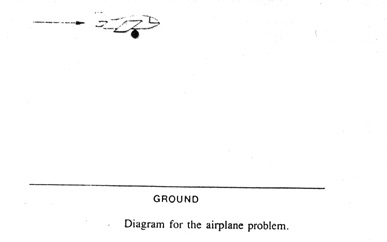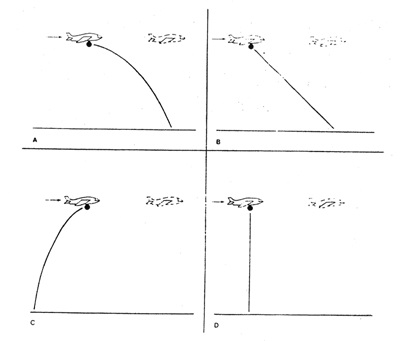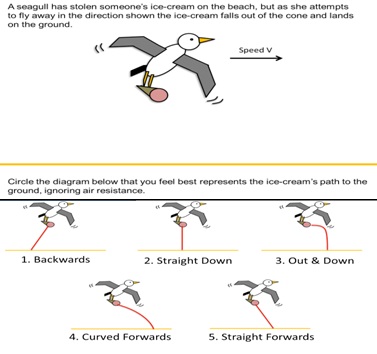Imagine this: you go to the arcade and start playing one of those mini-basketball games. You suck at them but your friend seems to be getting every ball in. He’s not Michael Jordan by any means and he’s never even played basketball before! “How did you do that?!” you ask him, mouth wide open in awe. “Simple – naive physics!” he replies. Turns out he’s a Psychology student… Anywho, that’s what this post will look at: what’s “naive physics” and how does it affect our day-to-day decisions?

To be honest with you, Physics wasn’t my strongest subject at school (it wasn’t the weakest either though!) but I hope I can still explain the concept of naive physics to you. In a nutshell, it’s when people rely on their personal experience rather than logical reasoning in order to predict and rationalise the physics (e.g., movements) of objects around them. Still too complicated to grasp? How about a cool example then? Look at the picture below: it’s a plane, moving horizontally at a constant speed. At some point during its journey, a cannonball is dropped from the plane to the ground. Ignoring air resistance, which of the 4 options would best describe the trajectory that the cannonball will have when falling from the plane?


Alright, time’s up! I’m not going to torture you anymore: the right answer’s A. Surprised? This diagram was actually part of a series of experiments in the late 90s and early 2000s where a group of Psychology and a group of Physics students were tested on choosing the right option in the same tasks. Naturally, you would expect Physics students to know their stuff but alas – most of them were equally bad at choosing the right answer as the Psychology students were. But why? It all comes down to associative learning. Individuals would normally extrapolate from their personal experience with similar physics rather than thinking logically and applying their knowledge about Newtonian physics. In this case, students wrongly interpreted that the cannonball has no impetus and that gravity should pull it down immediately (most of them chose option D). As mentioned in an earlier post of mine, associative connections make useful mental shortcuts for us and we would rely on our memory or intuition, which would not necessarily turn out to be right. I remember I chose the right answer for the plane problem because I have watched documentaries about World War II where planes were filmed dropping bombs on cities and the trajectory of the falling bombs could be clearly seen there. Interesting, huh?

Here’s another interesting thing about naive physics: a psychology experiment was recently carried out at the University of Exeter (ah, the memories!) led by Dr Ian McLaren, where researchers tested Psychology and Physics students (again!) and used the same physics problems as the original ones. However, they changed the scenario of these tasks. For example, instead of a plane dropping an object, the task was to say what the trajectory of an ice-cream dropped by a flying seagull would be. And you know what – at least 85% of both groups chose correctly. That’s because “dressing them up” in a more familiar scenario helped people visualise the problem better through everyday situations. Other “dressed up” examples included predicting the trajectory of a skateboarder on the edge of a ramp as well as the direction of a monkey jumping from one vine to another. That familiarity enabled the association between the scenario and the physical consequence – voila!

The thing is, we’re not born with this feeling of naive physics. On average, babies up to 9 months old would have no concrete concept of physics. It’s when infants start encountering objects, liquids, wheels and so on that they gradually create a sense of action -> consequence. For instance, if I tip my baby bottle to the side, the liquid will spill but if I hold it upright, it will stay in the bottle. Kids aged 3-7 start encountering more complex physics problems like density, quantity, transparency, transition, inertia etc. If you’re interested, you can check out Renee Baillargeon’s work. Speaking of inertia, how do you know which side of your body to lean on when staying upright in the bus? If most people are asked, they probably won’t know how to put it in scientific terms but their previous experience with buses (or public transport and inertia in general) would have built, through trial and error, that schema of intuitively predicting what to do. Remember Daniel Kahneman’s System 1? Naive physics is largely linked to it and to the whole concept of subconscious/implicit learning.

Okay, the lesson’s over, everyone! Hope you’ll take away the main message of naive physics: although it’s something erroneous and not always logical, you can’t argue that it can help us adapt to an ever-changing environment. But hey – make sure you pay attention in those Physics classes!
